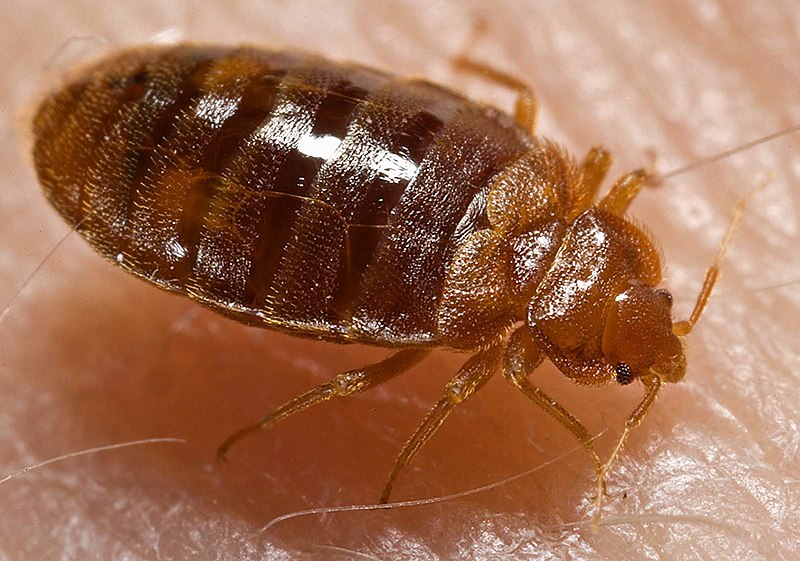Fail:Bed bug, Cimex lectularius.jpg
Ilme

Selle eelvaate suurus: 800 × 561 pikslit. Teised eraldusvõimed: 320 × 224 pikslit | 640 × 449 pikslit | 1024 × 718 pikslit | 1280 × 898 pikslit | 1600 × 1122 pikslit.
Algfail (1600 × 1122 pikslit, faili suurus: 161 KB, MIME tüüp: image/jpeg)
Faili ajalugu
Klõpsa kuupäeva ja kellaaega, et näha sel ajahetkel kasutusel olnud failiversiooni.
| Kuupäev/kellaaeg | Pisipilt | Mõõtmed | Kasutaja | Kommentaar | |
|---|---|---|---|---|---|
| viimane | 17. mai 2007, kell 17:11 |  | 1600 × 1122 (161 KB) | Patho | == Summary == {{Information |Description=ID#: 9822 Description: This 2006 photograph depicted an oblique-dorsal view of a '''bed bug nymph, Cimex lectularius''', as it was in the process of ingesting a blood meal from the arm of a “voluntary” human h |
Faili kasutus
Seda faili kasutab järgmine lehekülg:
Globaalne failikasutus
Järgmised muud vikid kasutavad seda faili:
- Faili kasutus vikis af.wikipedia.org
- Faili kasutus vikis an.wikipedia.org
- Faili kasutus vikis ar.wikipedia.org
- Faili kasutus vikis arz.wikipedia.org
- Faili kasutus vikis ast.wikipedia.org
- Faili kasutus vikis as.wikipedia.org
- Faili kasutus vikis azb.wikipedia.org
- Faili kasutus vikis be.wikipedia.org
- Faili kasutus vikis bg.wikipedia.org
- Faili kasutus vikis bjn.wikipedia.org
- Faili kasutus vikis bn.wikipedia.org
- Faili kasutus vikis bs.wikipedia.org
- Faili kasutus vikis ca.wikipedia.org
- Faili kasutus vikis ca.wikiquote.org
- Faili kasutus vikis ca.wiktionary.org
- Faili kasutus vikis ceb.wikipedia.org
- Faili kasutus vikis cs.wikipedia.org
- Faili kasutus vikis cv.wikipedia.org
- Faili kasutus vikis dag.wikipedia.org
- Faili kasutus vikis de.wikibooks.org
- Faili kasutus vikis din.wikipedia.org
- Faili kasutus vikis el.wikipedia.org
- Faili kasutus vikis eml.wikipedia.org
- Faili kasutus vikis en.wikipedia.org
- Faili kasutus vikis en.wikinews.org
- Faili kasutus vikis en.wiktionary.org
Vaata selle faili globaalset kasutust.

